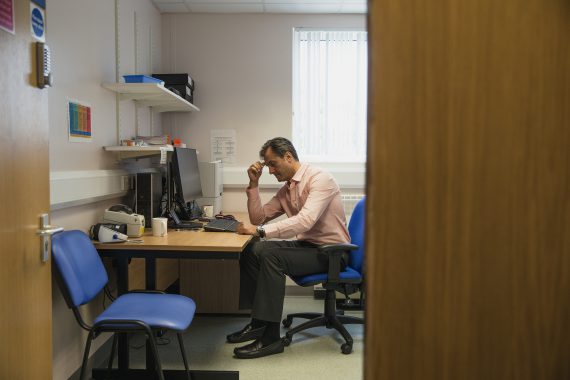GP practices based in deprived areas have significantly fewer full time-equivalent GPs per 10,000 patients than those based in more affluent areas, a study has found.
The University of Cambridge study, based on analysis of NHS Digital General Practice Workforce data for the period September 2015 to December 2020, also found that this inequality had widened somewhat over time.
The most deprived areas had 1.4 fewer FTE GPs per 10,000 patients compared to the least deprived areas by December 2020, with the picture mirrored for non-nurse practice staff.
There were 1.5 fewer patient-facing general practice staff (excluding GPs and nurses) per 10,000 patients in the most deprived areas compared to the least deprived areas, the report said.
However, researchers added that the lower number of GPs may be compensated in part by the practices having more nurses.
In addition to their report, the research team has also launched an interactive dashboard that maps local-level primary care workforce inequalities.
This reveals particularly badly affected areas to include West, North and East Cumbria, Humber, Coast and Vale, and Coventry and Warwickshire STP areas.
As for the reasons behind staffing inequity, the team pointed to previous research suggesting the opening and closing of practices in more disadvantaged areas, with practice closures increasing in recent years, was a primary driver.
Senior author on the study, Dr John Ford, from the Department of Public Health and Primary Care at the University of Cambridge said: ‘People who live in disadvantaged regions of England are not only more likely to have long-term health problems, but are likely to find it even more difficult to see a GP and experience worse care when they see a GP. This is just one aspect of how disadvantage accumulates for some people leading to poor health and early death.’
‘There may be some compensation due to increasing number of other health professionals, which may partially alleviate the undersupply of GPs in more socioeconomically disadvantaged areas. But this is not a like-for-like replacement and it is unlikely to be enough.’
The researchers say policymakers must consider why practices and primary care networks in disadvantaged areas are relatively under-staffed, and how this can be reversed.
They list potential options as:
- increased recruitment to medical school from disadvantaged areas
- incentivisation of direct patient care posts in under-staffed areas
- enhanced training offers for these roles
- offering practices and networks in under-staffed areas additional recruitment support.
They also suggest expanded use of additional roles under the Additional Roles Reimbursement Scheme (ARRS), saying this may partially alleviate GP workload in overstretched practices, but they caution that there is a risk that this additional workforce will gravitate to more affluent areas, further perpetuating inequity.
Dr James Matheson, a GP at Hill Top Surgery in Oldham, said: ‘People living in socioeconomically disadvantaged areas shoulder a much higher burden of physical and mental health problems but have less access to the GPs who could support them towards better health. For the primary care teams looking after them this means a greater workload with fewer resources – a burnout risk which can further exacerbate the problem.
‘General practice in disadvantaged areas is challenging but also enjoyable and professionally rewarding but now, more than ever, we need to see a more equitable distribution of workforce and resources to ensure it is sustainable.’
Commenting on the report, RCGP chair Professor Martin Marshall said: ‘All patients should have access to the best possible GP care, regardless of their circumstances or where they live, but a decade of under-investment in general practice means we simply don’t have enough GPs to meet the needs of a growing and ageing population.”
‘People living in deprived areas tend to have a greater number of long-term health conditions and more complex health needs, and therefore often require greater access to GP care and services. Urgent funding is needed for initiatives to attract GPs to under-doctored areas, as well as recruiting more GPs to the profession overall and preventing the ones we do have from burning out.’
He said this comes as the RCGP ‘has been calling on the Government to urgently deliver on its manifesto pledge of 6,000 additional GPs by 2024’.
He added: ‘GPs are gearing up for an exceptionally busy autumn and winter, delivering the expanded flu vaccination programme as well as the Covid booster campaign, on top of managing the fallout and backlog from the pandemic.
‘It is more essential than ever that general practice has the workforce capacity to manage both new and existing pressures, so that GPs can continue to deliver high-quality care to patients, wherever they happen to live.’

















READERS' COMMENTS [3]
Please note, only GPs are permitted to add comments to articles
Looking at the data for our practice, they have confused WTE with headcount and over-estimated our GPs by 50%. That doesn’t inspire much confidence in the research findings.
Practising in a deprived area is much more enjoyable——–however ARRS gives me more work
Well I’ve told them many times the reason.
They just ramped up the pressure and made silly uninformed and destructive reforms.
From a personal perspective:
despite being quite happy working in Jaywick for another few years, I quit GP surgeries for good at the last major reorganisation to my salaried job in jan 2020